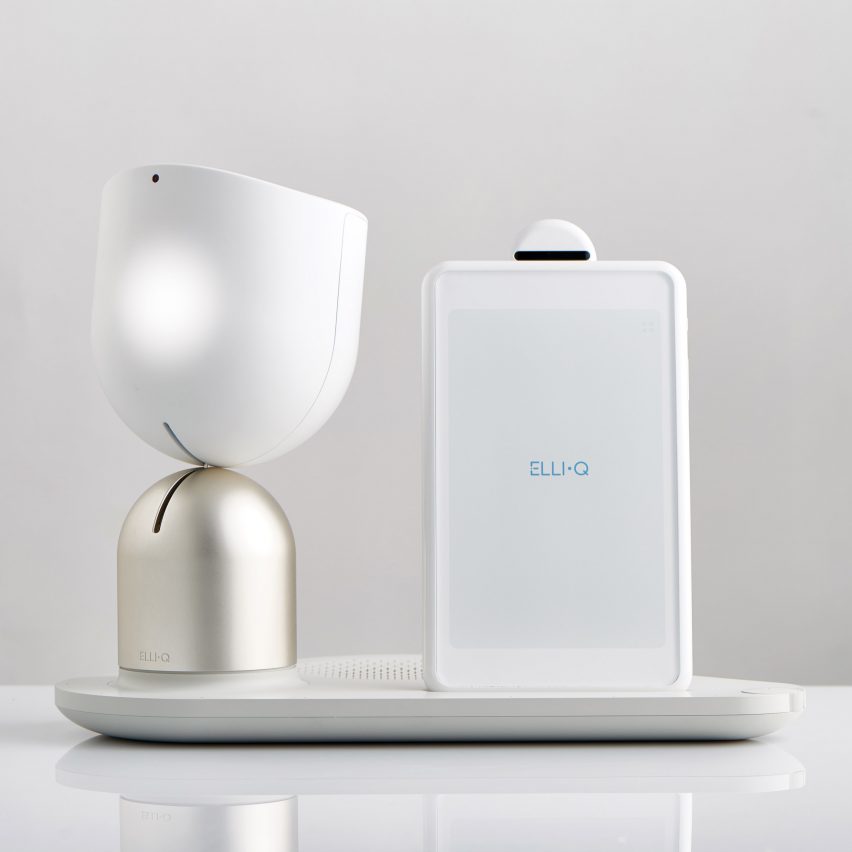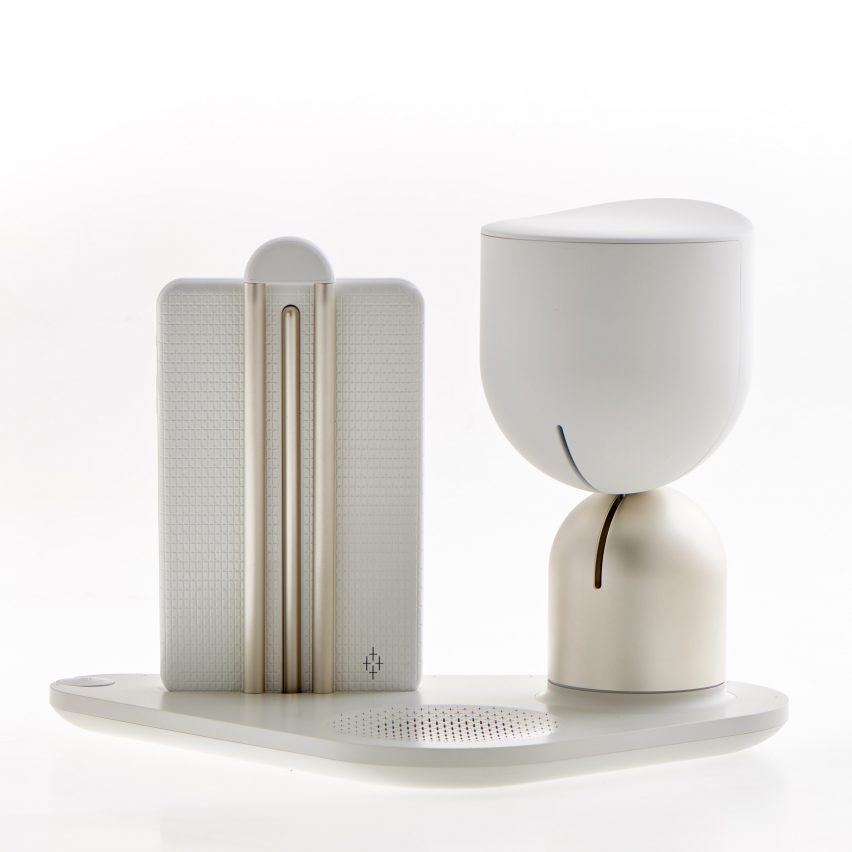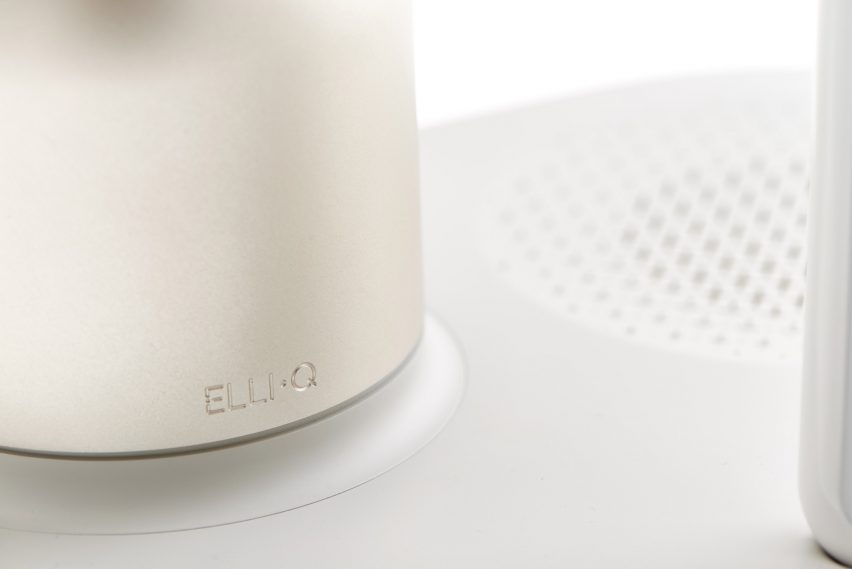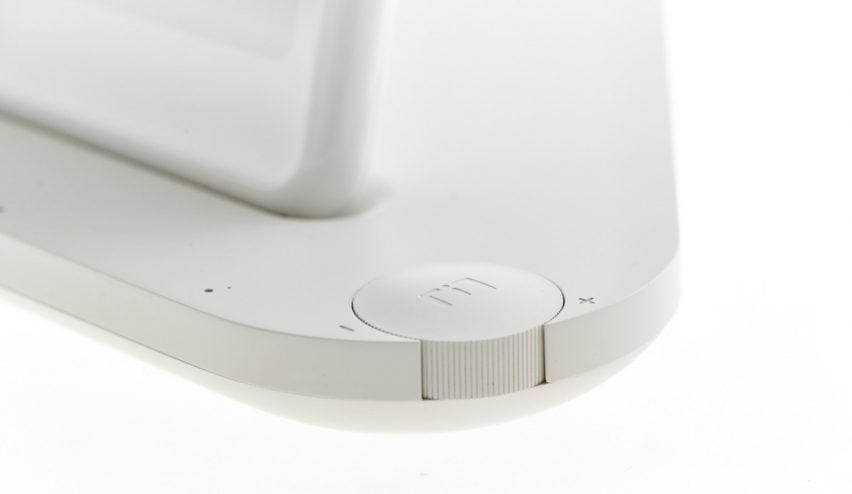ElliQ robot by Yves Béhar helps older adults stay connected to the world
Yves Béhar's Fuseproject studio has designed an "emotionally intelligent robotic companion", which is intended to help the ageing population connect with technology and continue learning in later life.
The ElliQ robot, designed in collaboration with a team at Intuition Robotics, was developed to address the problem of loneliness and lack of social activity among ageing adults.
It will be unveiled later today as part of an exhibition at London's Design Museum, which explores how designers can enhance the experiences of our later life.

When developing the robot, which San Francisco-based Fuseproject refers to as a "companion", the teams questioned how technology can appear less complex and intimidating to this specific population.
They also considered the ways artificial intelligence could help this demographic a maintain a healthy level of cognitive activity.
"The team at Fuseproject worked with Intuition Robotics to define an entirely new category of robot and interactions, both physically and interactively," said Béhar, who has designed a number of internet-connected products that range from a smart thermostat to robotic furniture that reconfigures tiny apartments.

"Unlike our current perceptions of robots as humanoids, our design approach is more akin to a beautiful tabletop object, with a screen and companion structure – a unique form factor designed specifically to foster comfort and familiarity and askew the typical robot vernacular."
Through research, the team devised a list of features most needed by this age group.
"Using natural language processing, with computer vision and emotion detection capabilities calibrated specifically for the needs of older adults, ElliQ interacts with the naturalness of a companion, but with a unique aesthetic form that defines its own category of being," said Béhar.
A tool named Coach uses goal-based AI to learn what the user wants to work towards, such as getting up more often, connecting with family, or learning more on a particular topic. It then proactively nudges them to help them achieve the goals.
Connector allows them to easily video chat with friends and family, view photos, and also send text messages, calls and connect to social media.
The Engager tool enables ElliQ to suggest music, share the news, find and play videos, or read audiobooks, while the Companion element uses speech, lighting, sound, images and movement to convey emotion and support.
A function called Lookout encompasses a series of built-in monitoring to allow a caregiver the ability to check-in with the device through social media.

Through the design process, Béhar was keen to create an elegant device that wouldn't look like a toy. Its base hides sensors and microphones to stop it looking too "gadget-like", while a combination of anodised aluminium and textured plastic in soft colours helps it subtly fit into its surroundings.
Making the screen and companion two separate entities was an intentional design choice by Béhar, who felt this way would allow the device to become personified.
"By leaving a screen off of the entity itself, our aim is to elegantly balance the fine line between an object and a robot, with subtle gestures to bring it to life in a relatable and lovable manner," he said.

"I often say that the perfect robot shouldn’t look like a Hollywood robot at all; rather, it should be a device that fits seamlessly into your home and enhance your everyday life," the designer continued. "ElliQ is a utopian example of Artificial Intelligence for the near future, developing a relationship in which we can learn, grow, and thrive as an ageing population".
ElliQ will be presented at the Design Museum as part of an exhibition called New Old, along with new products by Konstantin Grcic, Future Facility, Special Projects, IDEO and PriestmanGoode.
The show opens to the public tomorrow at the museum's new location in Kensington and runs until 19 February 2017.